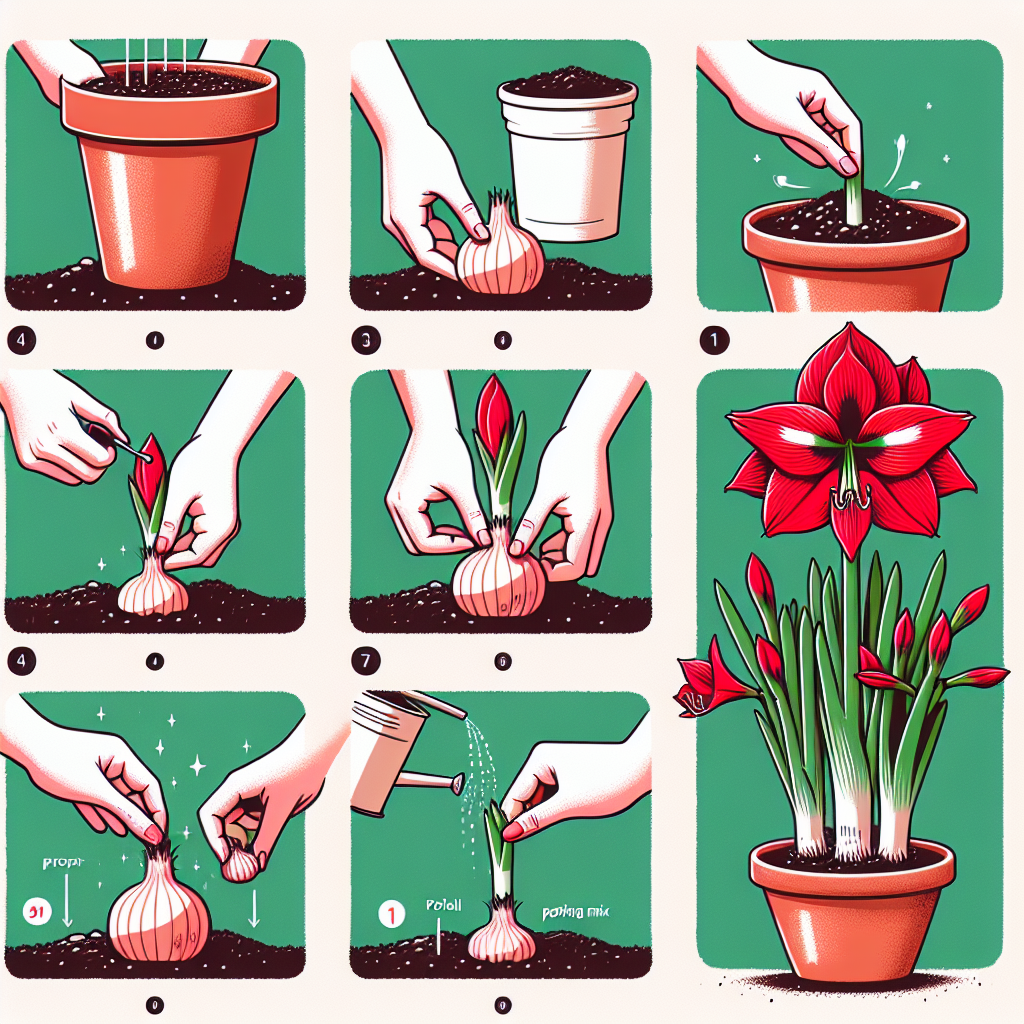
How to grow amaryllis bulbs
How to Cultivate Stunning Amaryllis Bulbs
Amaryllis bulbs are a spectacular way to bring vibrant colors and stunning blooms into your home. Known for their large, trumpet-shaped flowers, these bulbs can transform any space into a botanical oasis. In this guide, we will walk you through everything you need to know about cultivating Amaryllis bulbs, from choosing the right bulbs to proper care and maintenance.
Understanding Amaryllis: The Basics
Before diving into how to grow your Amaryllis bulbs, it's essential to understand what they are. Amaryllis belongs to the Hippeastrum genus and is often mistaken for true Amaryllis, which is a different type of plant. Here are some critical facts:
- Origin: Native to South America, particularly Brazil.
- Growth Cycle: They bloom in the winter and can be forced to bloom during the holiday season.
- Flowers: They can produce one or multiple flower stalks per bulb, with each stalk boasting up to five blooms.
Choosing the Right Bulbs
The first step in growing your Amaryllis is selecting the right bulbs. Here are some tips:
- Quality: Look for large, firm bulbs that are free from mold and soft spots. Higher quality bulbs produce larger flowers.
- Variety: There are several types of Amaryllis, such as the classic red and white varieties, which bloom beautifully in winter.
- Source: Purchase your bulbs from reputable nurseries or garden stores to ensure you are getting healthy specimens.
Planting Your Amaryllis Bulbs
Once you have selected the right bulbs, it’s time to plant them. Follow these steps to ensure successful growth:
What You Will Need
- Amaryllis bulbs
- Pot (6 to 8 inches wide with drainage holes)
- Potting soil (light and well-draining)
- Water
- Fertilizer (optional)
Steps to Plant
- Choose Your Pot: Select a pot that is slightly larger than the bulb. The bulb should sit snugly, not crowded.
- Fill with Soil: Place a layer of potting soil at the bottom of the pot.
- Position the Bulb: Place the bulb on the soil with the pointed end facing upward. About one-third of the bulb should be above the soil.
- Cover with Soil: Fill in around the bulb with more potting soil, leaving the top exposed.
- Water: Gently water the soil until it is moist but not soggy.
Optimal Growing Conditions
To grow healthy Amaryllis bulbs, you need to provide them with specific conditions. Here are the primary factors to consider:
Light
Amaryllis bulbs thrive in bright, indirect sunlight. A south-facing window is ideal. Avoid direct sunlight, which may scorch the leaves.
Temperature
These bulbs prefer a warm environment. The ideal temperature is between 70°F to 75°F (21°C to 24°C). They can be tolerant of slightly cooler temperatures but avoid dropping below 60°F (15°C).
Watering
Water your bulbs only when the top inch of soil feels dry. Overwatering can lead to bulb rot. During the active growth phase, which typically begins a few weeks after planting, you can water more frequently.
Encouraging Blooms
To encourage robust blooms and prolong flowering, follow these care tips:
- Fertilizing: After the flower stalk emerges, start feeding your Amaryllis with a balanced liquid fertilizer every two weeks.
- Staking: If the flower stalk grows too tall, consider staking it to avoid breakage.
- Rotate: Rotate the pot every week to ensure even growth and exposure to light.
Post-Bloom Care
After your Amaryllis blooms, you may wonder what to do next. Here are the steps for post-bloom care:
- Cutting the Stalk: Once the blooms have faded, cut the flower stalk back close to the bulb. Leave the leaves intact as they continue to photosynthesize and nourish the bulb.
- Reduce Watering: Gradually reduce watering as the plant's growth slows down.
- Store for Dormancy: Allow the bulb to enter dormancy for about 8-10 weeks. Keep it in a cool, dark place while barely watering.
Re-Blooming Amaryllis Bulbs
Many gardeners hope for their Amaryllis to re-bloom. Here’s how to achieve that:
- Care During Dormancy: After dormancy, repot the bulb with fresh soil, leaving the top third exposed.
- Water Gradually: Start watering again to encourage growth.
- Light Exposure: Move the pot back to a bright location.
Common Problems and Solutions
While growing Amaryllis bulbs can be rewarding, they may encounter issues. Below are some common problems and how to fix them:
| Problem | Symptoms | Solution |
|---|---|---|
| Bulb Rot | Soft and mushy bulbs | Reduce watering and ensure proper drainage. |
| Stunted Growth | Short flower stalks and minimal blooms | Check for adequate sunlight and fertilizing. |
| Yellow Leaves | Leaves turning yellow and wilting | Overwatering or lack of nutrients; adjust care accordingly. |
Conclusion
Growing Amaryllis bulbs can be a rewarding and uplifting experience. From selecting the right bulbs to the proper care and maintenance, taking these steps can ensure a successful blooming season. Remember to provide sufficient light, appropriate temperatures, and proper watering practices. With patience and care, you will be rewarded with a beautiful display that will brighten your home during the colder months.
As you embark on your journey of cultivating these stunning flowers, keep in mind the joy they bring during their blooming season. Happy gardening!
By Guest, Published on October 12th, 2024